Birds have an extremely varied diet adapted to each species’ lifestyle, behavior, and hunting and feeding techniques. They have a unique digestive system that promotes rapid digestion, which is why they can take various types of prey, including other birds.
Naturally, when we think of birds that eat other birds, the first types that cross our minds are hawks and eagles, right?! Well, it’s only natural, as they’re excellent birds of prey known to hunt hundreds of animal species! But we’ll surprise you with some other species that hunt and kill birds!
If you want to learn more, keep reading, as we’ve prepared some interesting details about the topic!
6 Types of Birds that Eat Other Birds
1. Hawks
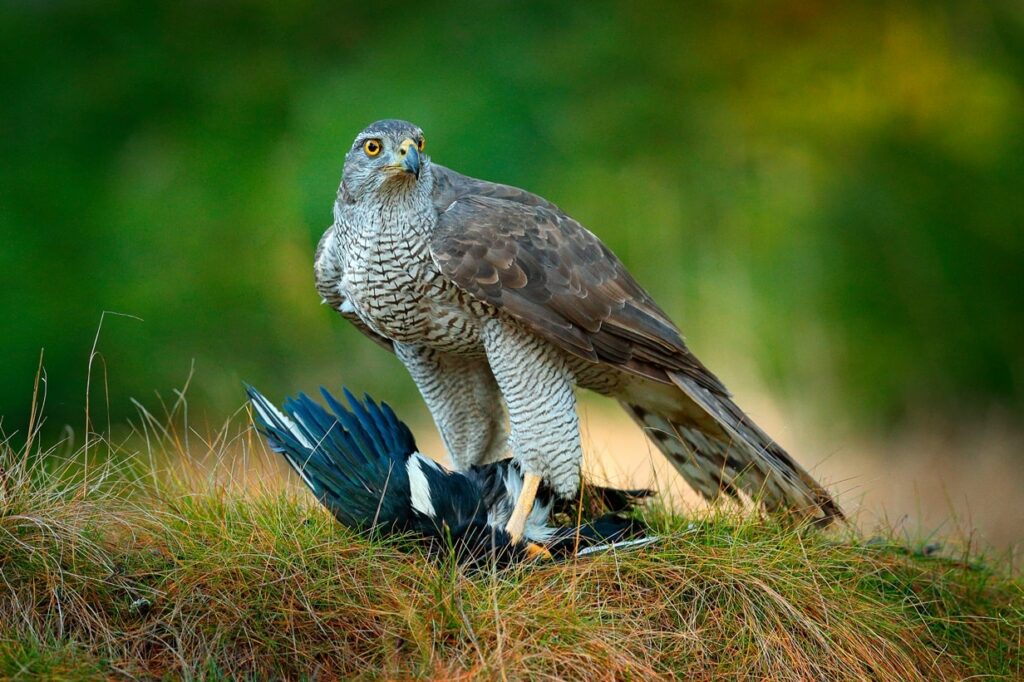
Hawks are birds of prey spread worldwide, except Antarctica. They’re highly intelligent birds that rely on their keen eyesight and smell while hunting.
A hawk’s diet can consist of almost any small animal it can find: lizards, snakes, rodents, and even birds. However, some hawk species are specialized in hunting birds and prefer those above other prey.
Hawks are grouped into two groups, Accipitrinae and Buteo, and the former group consists, in fact, of hawks that prey primarily on birds.
For example, the red goshawk (Erythrotriorchis radiatus) prefers eating parrots and pigeons but won’t refuse other bird species it stumbles upon. Occasionally, it may hunt reptiles, mammals, and large insects.
The gabar goshawk (Micronisus gabar) is another species in the Accipitrinae subfamily that preys primarily on birds. These birds were observed attacking weaver nests and those of other colonial birds and snatching their chicks. However, just like their relatives, they may prey on mammals, reptiles, and insects, as well, if the opportunity arises.
Other species in the subfamily that prey on birds include the dark chanting goshawk (Melierax metabates), the pale chanting goshawk (Melierax canorus), and the eastern chanting goshawk (Melierax poliopterus), although the latter seems to prefer lizards if it were to choose between those and birds.
The hawks in the Buteo group have a more diversified diet. Although most hawks in the group can and will eat birds, not all will prefer them above other prey – in short, birds aren’t their primary food source.
Take the red-tailed hawk, for example. It is known to feed on over 200 animal species! It doesn’t prefer hunting for birds, but it will take them if it stumbles upon vulnerable specimens. However, this depends on where the red-tailed hawk is located as well. Those living near large populations of Galliformes species will definitely make them their main food source.
2. Owls
Owls are part of the Strigiformes order of birds. There are over 200 owl species, each unique in its own way. However, some things are true for most types: they’re usually nocturnal and solitary and feature specialized feathers for flying silently, have binaural hearing and binocular vision, as well as large, broad heads.
Most owls prey primarily on insects, lagomorphs, fish, and small rodents. However, their diet is much more diverse than this and varies between species.
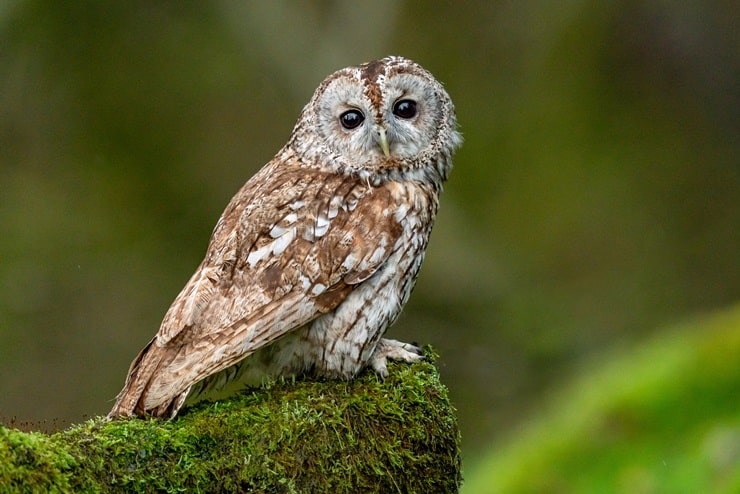
The tawny owl (Strix aluco), for example, feeds on birds as well, besides rodents, mammals, beetles, and earthworms. In fact, the tawny owls living in urban areas prey primarily on birds, having been observed hunting even mallards and kittiwakes! They usually swallow the prey whole, and the parts that cannot be ingested are regurgitated as pellets.
The little owl (Athene noctua) is another species that preys on birds besides insects, amphibians, reptiles, and mammals. It is believed that birds are hunted primarily during the breeding season, and chicks of game birds are preferred.
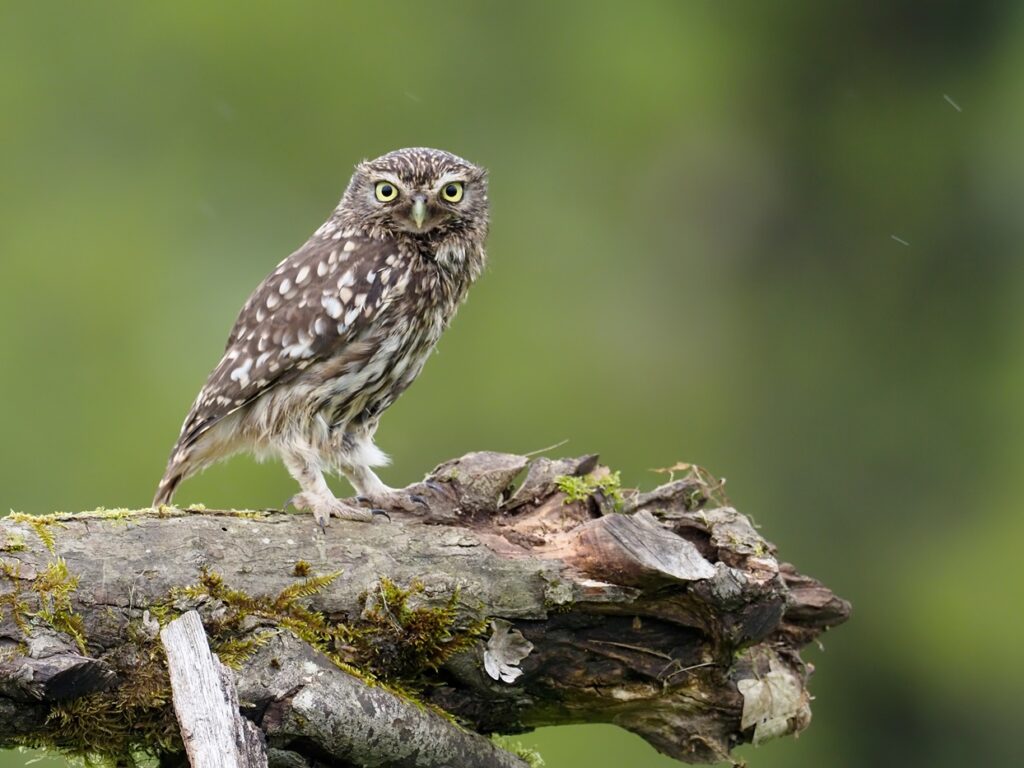
Another owl species with a rather interesting diet is the Eurasian eagle owl (Bubo bubo), known to prey on more than 600 species, of which at least 300 are birds!
Eurasian eagle owls are known to eat rock and common wood pigeons, carrion crows, hooded crows, Eurasian jays, common ravens, rooks, spotted nutcrackers, numerous water bird species, and various game birds like grey partridges.
3. Eagles
The term “eagle” is used for various types of birds of prey part of the Accipitridae family. They’re renowned for their large size, heavy heads and beaks, keen eyesight, and excellent flying skills. That’s why catching prey, birds included, is such an easy task for them!
Eagles are typically divided into several groups depending on what their diets consist of.
For example, some scientists group the Circaetinae and Eutriorchis subfamilies as snake eagles because they rely on snakes as primary prey. However, this doesn’t mean their hunting is always focused on these limbless reptiles.
The same goes for fish eagles. The eagles in the Haliaeetus genus are known to hunt fish as their primary food source. However, they will delight in aquatic birds as well.
The eagles in the Aquila genus are grouped as booted eagles, sometimes also called true eagles. Many species in the genus are known to prey on birds.
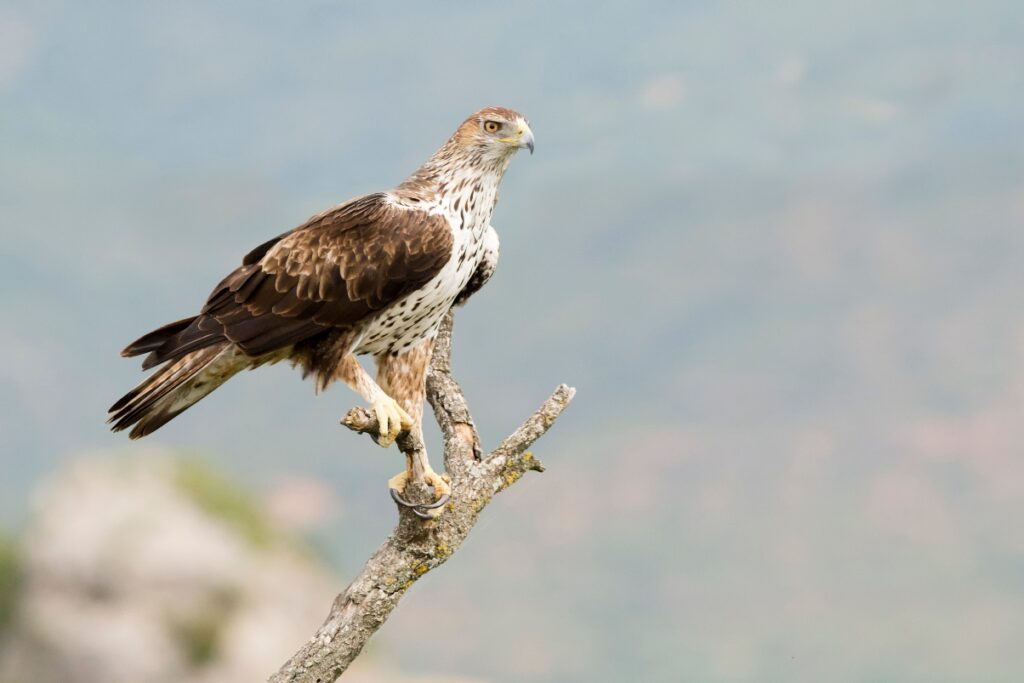
One of them is the Bonelli’s eagle, whose secondary wild prey choice is the red-legged partridge, a well-known game bird. It will also hunt chukars, village chickens, green junglefowl, pigeons, yellow-legged gulls, sandpipers, and herons, to name a few.
Another eagle species that preys on birds is the Eastern imperial eagle. Although primarily adapted to hunting on the ground, it is known to catch more than 120 bird species, especially common pheasants, domestic chickens, and others.
4. Kestrels
Kestrels are predatory birds in the Falco genus and are renowned for hovering at around 35-65 feet above the ground while hunting and swooping down to take ground prey.
Although not as large as eagles, kestrels are known to hunt birds, too! Although bird species wouldn’t typically be their first dietary choice, they’ll take advantage of a small bird if circumstances are in their favor.
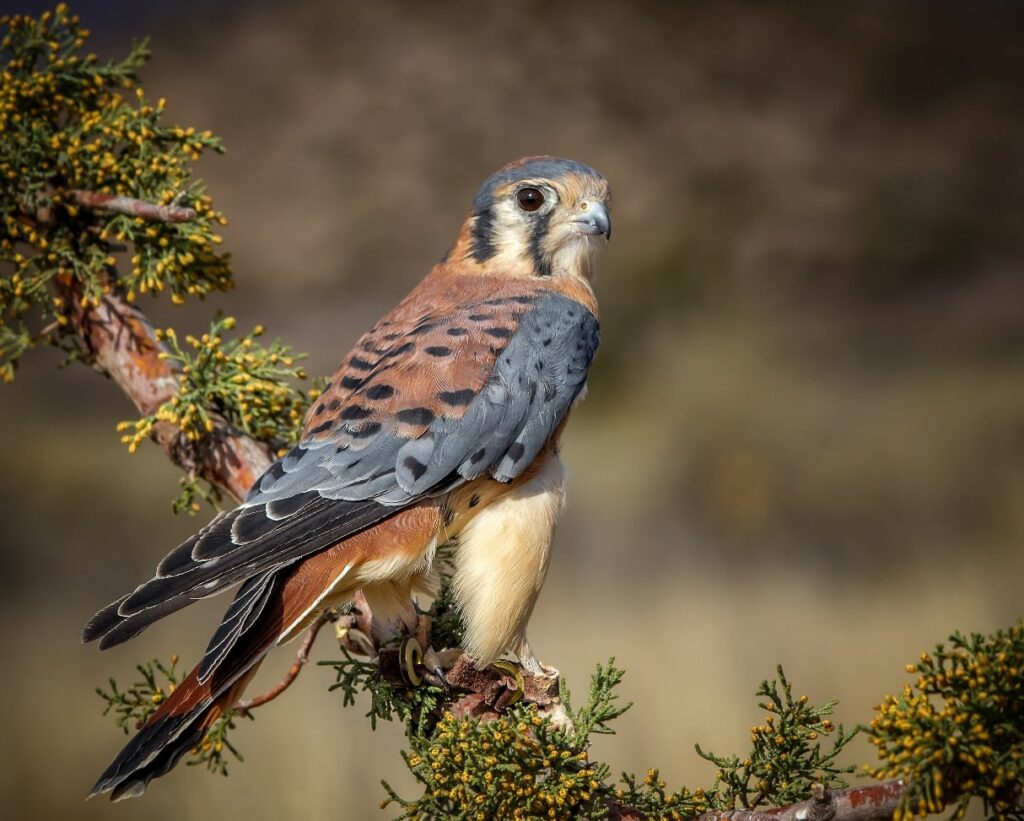
The American kestrel (Falco sparverius) is one of the species observed eating small birds, sparrows included. Although they primarily catch prey on the ground, taking birds in mid-flight isn’t uncommon.
Another kestrel species seen hunting and catching small birds is the Malagasy kestrel (Falco newtoni). While it primarily feeds on insects, small birds, frogs, and mammals are occasionally preyed upon as well. However, unlike the species mentioned before, the Malagasy kestrel hunts birds only on the ground.
Other kestrel species that hunt small birds include the Seychelles kestrel (Falco araeus), the greater kestrel (Falco rupicoloides), and the lesser kestrel (Falco naumanni).
5. Seagulls
Seagulls are part of the Laridae family of seabirds renowned for their typical coloration of either gray or white, featuring black markings on their wings and heads. Moreover, seagulls are known for having unhinging jaws, making it possible for them to swallow large prey, which is why they’re considered opportunistic feeders.
Additionally, they’re highly adaptable hunters and can take prey in the air, on the ground, and on water. As such, while most species primarily feed on aquatic creatures, birds are still part of their diet, be it that seagulls go for their eggs, baby birds, or adult prey.
The food sources a seagull prefers depend on its age and size. As such, even if the circumstances are in their favor, not all seagulls will choose to hunt birds.
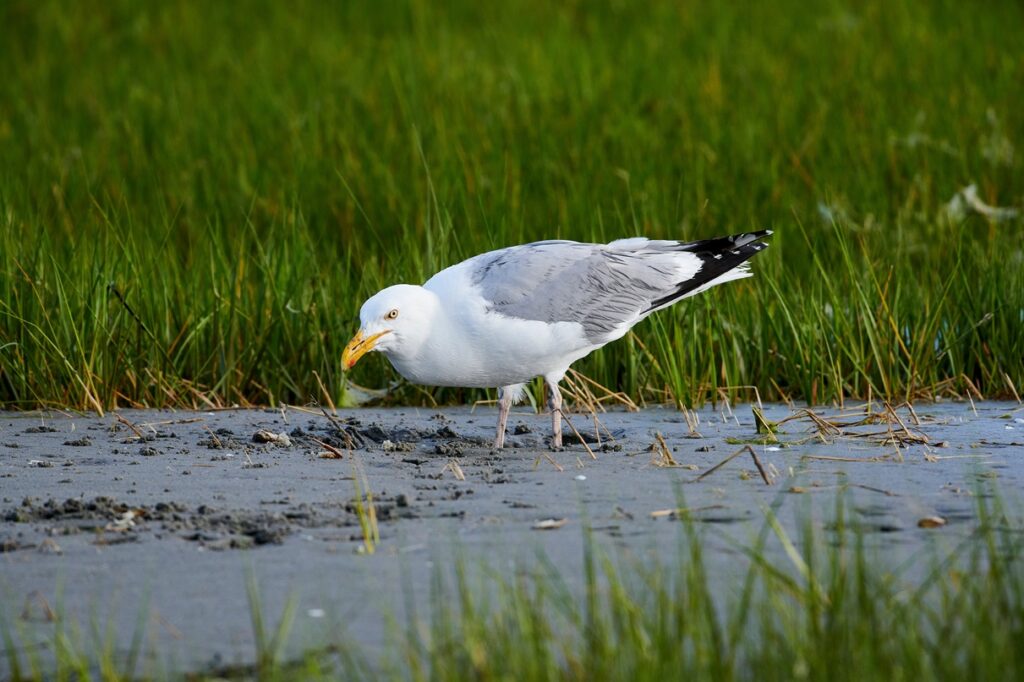
Here are some seagull species that occasionally prey on birds:
- Pacific gull (Larus pacificus) – it primarily feeds on fish species and invertebrates but is also known to hunt and kill other seabirds.
- Western gull (Larus occidentalis) – its main food sources are fish and invertebrates, but they also feed on smaller bird species, as well as baby birds, ducklings being their favorite; some were observed feeding on rock doves.
- American herring gull (Larus smithsonianus) – it has a predominantly marine diet but also feeds on insects and birds, including their eggs and young.
- Mediterranean gull (Ichthyaetus melanocephalus) – it eats fish, insects, worms, as well as young birds.
- Sabine’s gull (Xema sabini) – it primarily feeds on insects, crustaceans, and fish but will take some young birds and their eggs if possible; it was observed killing and eating black turnstones and lapland longspurs.
6. Crows
The term “crow” is used to refer to some bird species in the Corvus genus. They’re typically believed to be smaller than ravens, which are part of the same genus.

While most crows’ diets consist primarily of grains, seeds, and fruits, some species will also go for reptiles, rodents, mammals, and even birds, thus making them omnivorous birds.
Whether a crow will or will not hunt and kill a bird depends on its size, age, and lifestyle. For example, the little crow (Corvus bennetti) is slightly smaller than other species and will only forage for cereals, other seeds, and sometimes insects.
The Cape crow (Corvus capensis) is a larger species and was spotted killing birds weighing up to one pound, being especially fond of domestic poultry.
The same goes for the Torresian crow (Corvus orru) – since it’s larger, it won’t refuse a small bird meal if it’s possible to obtain it.
Another crow species that has been observed feeding on young birds and egg birds is the pied crow (Corvus albus). However, this species will likely feed on already injured birds rather than hunt them down and kill them.
